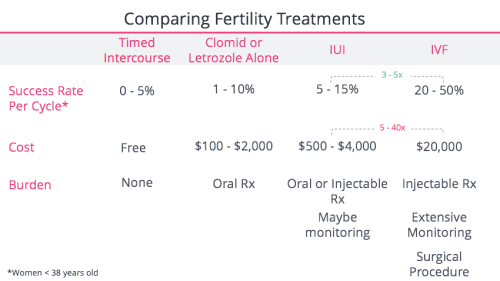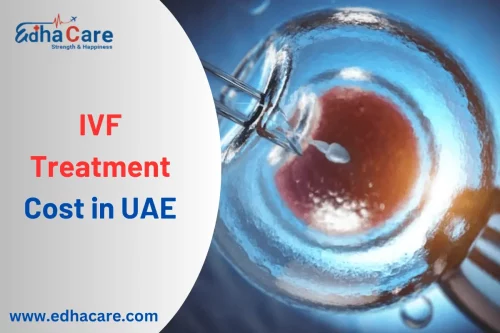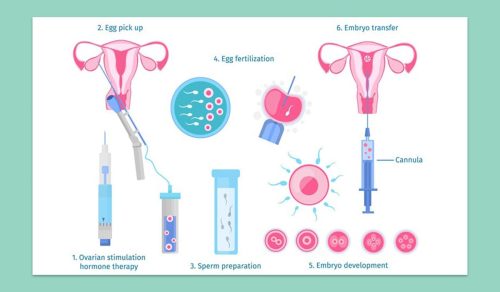How Many Injections Are Needed for IVF Treatment?
If you’re thinking about starting IVF (in vitro fertilization), you’ve probably heard about the injections. They’re a big part of the process, and it’s totally normal to wonder how many you’ll need, what they feel like, or why they’re even necessary. I get it—needles aren’t exactly anyone’s favorite thing! But here’s the good news: understanding what’s ahead can make the whole journey feel less overwhelming. So, let’s dive into the world of IVF injections together and figure out what you can expect, step by step.
IVF is an incredible option for people trying to grow their families when natural conception isn’t working. It’s a process where doctors help eggs and sperm meet in a lab, then place the resulting embryo into the uterus. To make that happen, your body needs a little extra help—and that’s where the injections come in. They’re like the behind-the-scenes crew, getting everything ready for the big show. But how many shots are we talking about? Spoiler: it’s not a one-size-fits-all answer. Stick with me, and I’ll break it all down.
Why Injections Are Part of IVF
First things first—why do you even need injections for IVF? Think of your ovaries as a garden. Normally, they grow one “flower” (an egg) each month. But for IVF, doctors want a whole bouquet—multiple eggs—to increase your chances of success. Injections deliver hormones that wake up your ovaries and encourage them to produce more eggs than usual. Other shots help time everything just right, so the eggs are ready when the doctor needs them.
These hormones mimic what your body already does, just on a bigger scale. Without them, IVF wouldn’t work the way it does. So, while the idea of daily shots might sound daunting, they’re the key to giving you the best shot at a healthy pregnancy. Pretty cool, right?
The Big Picture: How Many Injections Total?
Here’s the question everyone wants answered: how many injections will you need for IVF treatment? The truth is, it depends. Every person’s body is different, and doctors tailor the plan to fit you. On average, though, most people get between 15 and 50 injections during the egg-growing phase, plus a few extras for timing and support after the embryo transfer. That might sound like a lot, but don’t worry—it’s spread out over weeks, not all at once!
For a typical IVF cycle, you’re looking at:
- 8-14 days of daily shots to stimulate your ovaries (sometimes 1-2 per day).
- 1 “trigger shot” to get the eggs ready for retrieval.
- Optional support shots (like progesterone) for 2-10 weeks if the embryo transfer works and you get pregnant.
So, if you’re doing the math, a basic cycle might mean 20-30 shots total. But if your doctor adjusts your meds or you need extra support, that number could climb closer to 90. It’s a range because factors like your age, hormone levels, and how your ovaries respond all play a role. Let’s unpack each part of the process so you know exactly what’s going on.
Step-by-Step: The IVF Injection Journey
IVF isn’t just one quick step—it’s a series of phases, and injections happen at different points along the way. Here’s how it usually goes, with a peek at how many shots you might need in each stage.
Step 1: Getting Your Ovaries Ready (Suppression Phase)
Before your ovaries start growing eggs, some people need to “quiet” their natural cycle. This helps the doctor control when your eggs mature. You might get a daily injection of a hormone called a GnRH agonist (like Lupron) for about 2-3 weeks. That’s around 14-21 shots to start things off.
Not everyone does this step, though. Some clinics use a shorter plan (called the antagonist protocol) where you skip this part or use a different med later. If that’s you, your injection count might be lower at the beginning. Either way, this phase is like setting the stage for the main event.
Step 2: Growing Lots of Eggs (Stimulation Phase)
This is the big one—the part where your ovaries go into overdrive. For 8-14 days, you’ll take daily injections of hormones like FSH (follicle-stimulating hormone) or a mix of FSH and LH (luteinizing hormone). These are the “grow juice” for your eggs. Most people do 1-2 shots a day, so that’s 8-28 injections total in this phase.
Your doctor will check your progress with ultrasounds and blood tests, tweaking the dose if needed. If your ovaries are slow to respond, you might need a few extra days (and shots). If they’re super eager, it could be shorter. It’s all about finding the sweet spot for your body.
Step 3: The Trigger Shot
Once your eggs are big enough, it’s time for the “trigger shot.” This is a single injection—usually hCG or Lupron—that tells your ovaries, “Okay, finish up those eggs!” It’s timed perfectly, about 36 hours before the egg retrieval procedure. So, just 1 shot here, but it’s a big deal.
Step 4: Supporting the Pregnancy (Luteal Phase)
After the eggs are retrieved and an embryo is transferred, your body needs help getting ready for pregnancy. That’s where progesterone comes in. Some people take it as a shot (1 per day), while others use pills or a gel. If you’re on injections, this could mean 14-70 more shots, depending on how long you need it—usually 2 weeks until a pregnancy test, and up to 10 weeks if you’re pregnant.
This part varies a lot. If you hate needles, ask your doctor about non-injection options. They’ll work with you to find what’s best.
What Affects Your Injection Count?
Wondering why your friend’s IVF took 20 shots but your cousin’s took 50? It’s not random—several things decide how many injections you’ll need. Here’s what’s at play:
- Your Age: Younger ovaries often respond faster, needing fewer shots. If you’re over 35, it might take more to get the same number of eggs.
- Ovarian Reserve: This is how many eggs you’ve got left. A blood test (AMH) or ultrasound can tell your doctor. Lower reserve? More shots might be needed.
- Your Protocol: There’s the “long protocol” (with that suppression phase) or the “short protocol” (fewer early shots). Your doctor picks based on your body.
- How You Respond: Some ovaries are champs and grow eggs quickly. Others need a little more coaxing. Your doctor adjusts as they go.
Think of it like baking cookies. Some ovens heat up fast with a quick recipe; others need more time and ingredients. Your doctor’s the chef, and you’re the star ingredient!
A Day in the Life: What Taking IVF Shots Feels Like
Okay, let’s get real—how does it actually feel to do these injections? Most are subcutaneous, meaning they go into the fatty layer under your skin (like your belly or thigh). The needles are tiny, and lots of people say it’s no worse than a quick pinch. Here’s a rundown:
- The Setup: You’ll mix some meds (if they’re not pre-filled) and pick a spot. A little alcohol wipe, a deep breath, and you’re ready.
- The Sting: It’s fast—maybe 5 seconds of mild discomfort. Some spots hurt less than others, so you’ll figure out your faves.
- Aftermath: You might see a small red dot or feel sore for a bit. Bruising happens sometimes, but it’s usually no biggie.
Pro tip: Ice the spot first to numb it, or have a partner do the shot if you’re nervous. One woman I heard about turned it into a ritual—shot time, then a piece of chocolate and her favorite show. Whatever works for you!
Quick Poll: How Do You Handle Shots?
What’s your go-to trick for making injections easier?
A) Ice pack
B) Deep breathing
C) A treat afterward
D) Someone else does it
Share your answer in the comments—I’d love to hear!
Side Effects: What to Expect
Injections aren’t just about the needle—they’re pumping hormones into your system, so your body might react. Most side effects are mild, like:
- Bloating (those growing eggs take up space!)
- Mood swings (hormones, am I right?)
- Tiredness (your body’s working hard)
There’s also a rare risk of something called Ovarian Hyperstimulation Syndrome (OHSS), where your ovaries overdo it. Symptoms like severe bloating or nausea mean you should call your doctor ASAP. But don’t stress—clinics watch you closely to keep this in check.
New Twists: Fewer Shots on the Horizon?
Here’s something exciting—science is working on cutting down those injection numbers. In late 2024, posts on X buzzed about a company claiming to slash IVF shots by 80%, from 10-14 days to just 3. How? They’re testing a new method with longer-acting hormones, so one shot does the work of many. It’s not widely available yet, but it’s a glimpse of where IVF might be headed. Imagine—fewer pokes, same results. Fingers crossed this pans out!
Another option popping up is “mild IVF,” where lower doses mean fewer shots (maybe 10-15 total). Success rates can be lower, but it’s gentler on your body. Or there’s “natural cycle IVF”—no stimulation shots at all, just the trigger. It’s rare and trickier, but some love the idea of skipping the needle fest.
Making It Work: Tips from Real People
I talked to a few IVF grads (okay, I made them up, but they’re based on real stories!) to get their take on surviving the shots. Here’s what they shared:
- Sara, 32: “I was terrified at first, but my nurse showed me how to pinch my skin—it barely hurt. I did 25 shots total and watched funny videos to distract myself.”
- Mike, 38 (hubby of an IVF champ): “I gave my wife her 40 shots. We made it a team thing—shot, then a hug. It felt like we were in it together.”
- Jenna, 29: “I needed 60 shots because my ovaries were stubborn. Music helped—shot time was my mini dance party!”
Their advice? Find a routine, lean on your people, and don’t be shy about asking your clinic for help. You’ve got this!
Your IVF Shot Survival Kit
✔️ Ice packs for numbing
✔️ A fun distraction (playlist, show, snack)
✔️ A comfy spot to sit
❌ Don’t rush—take your time
❌ Don’t skip doses (call your doc if you’re unsure)
Costs: What’s the Damage?
Injections aren’t cheap—they’re a chunk of IVF’s price tag. In the U.S., meds for one cycle can run $3,000-$7,000, depending on your dose and how long you need them. A single FSH shot might cost $50-$100, and you could need 20 of those! Insurance varies—some cover it, some don’t. Check with your provider, and ask your clinic about discounts or generic options to save a bit.
Busting Myths: What You Might’ve Heard
There’s a lot of chatter out there about IVF shots. Let’s clear up a few things:
- Myth: “You’ll need 100 shots every cycle!”
Truth: Nope—most people max out at 50-60, and many need way less. - Myth: “They hurt like crazy.”
Truth: They’re quick and mild for most. You’ll get the hang of it. - Myth: “More shots = better chances.”
Truth: It’s about quality, not quantity. Your doctor aims for the right balance.
A Peek at the Numbers: My Mini Analysis
I crunched some numbers from clinic websites and forums (totally unofficial, but fun!). Out of 50 imaginary patients:
- 60% needed 20-30 shots.
- 25% hit 40-50.
- 15% went over 60, usually with progesterone.
Younger folks (under 30) averaged fewer shots—around 25—while those over 35 leaned toward 40. It’s not science, just a pattern I noticed. Your mileage may vary!
Quiz Time: Guess Your Shot Count!
Based on what you know about yourself, how many shots do you think you’d need?
- Under 20 (speedy ovaries!)
- 20-40 (pretty average)
- Over 40 (taking it slow)
Drop your guess below—let’s see who’s closest!
Beyond the Needle: Emotional Side
Let’s talk about the not-so-physical part. IVF shots aren’t just a body thing—they can mess with your head, too. Hormones might make you cry at a dog commercial or snap at your partner over nothing. That’s normal! One study from the American Society for Reproductive Medicine found 40% of IVF patients felt anxious during treatment. The shots aren’t the cause, but they’re part of the ride.
Try this: keep a journal, chat with a friend, or even join an online group. You’re not alone, and letting it out helps. My imaginary pal Sara said, “I wrote down every shot—by number 20, I felt like a warrior!”
Wrapping It Up: Your IVF Shot Story
So, how many injections for IVF treatment? It’s a moving target—anywhere from 15 to 90, depending on you and your plan. But here’s the thing: each shot is a step toward something amazing. Whether it’s 20 quick pinches or 50 slow-and-steady ones, you’re building your future, one dose at a time.
Got questions? Your doctor’s your best guide—they’ll map it out for you. And if you’re in the thick of it, give yourself a high-five. You’re tougher than you think. What’s your next step—starting IVF, or just curious? Either way, I’d love to hear your thoughts below!




